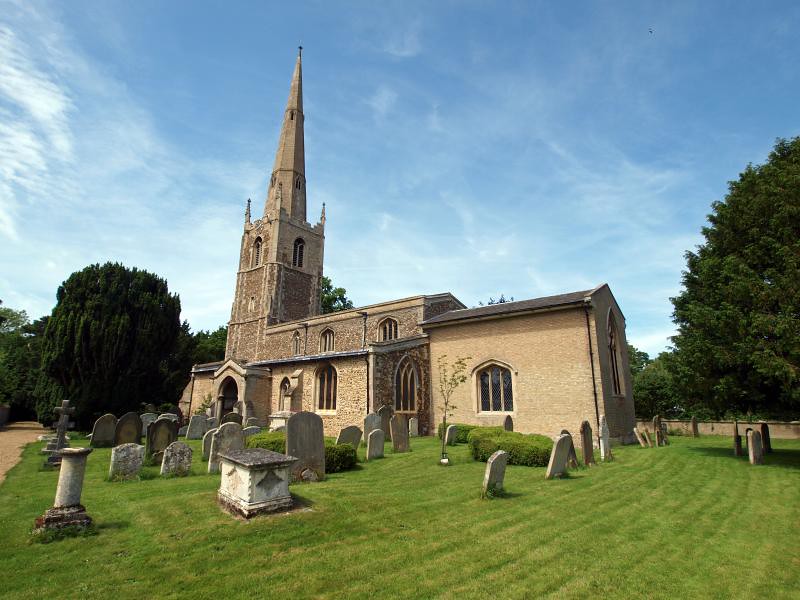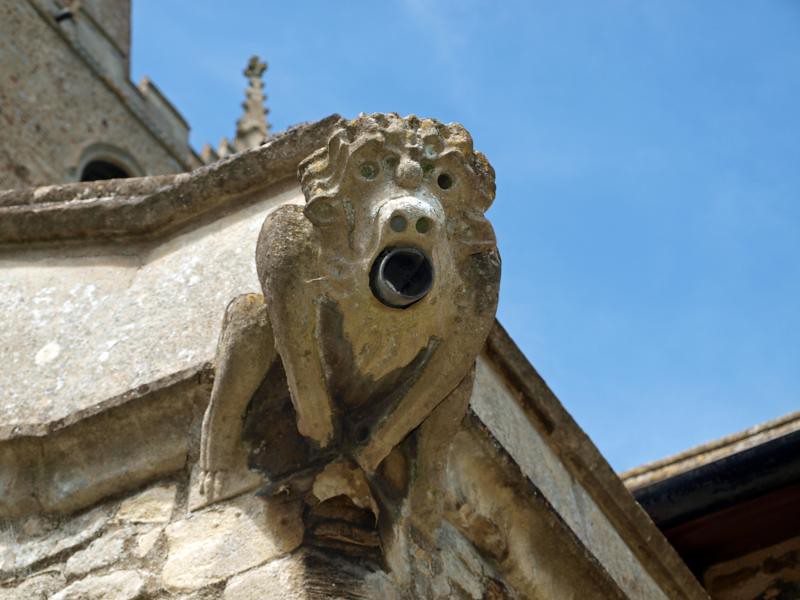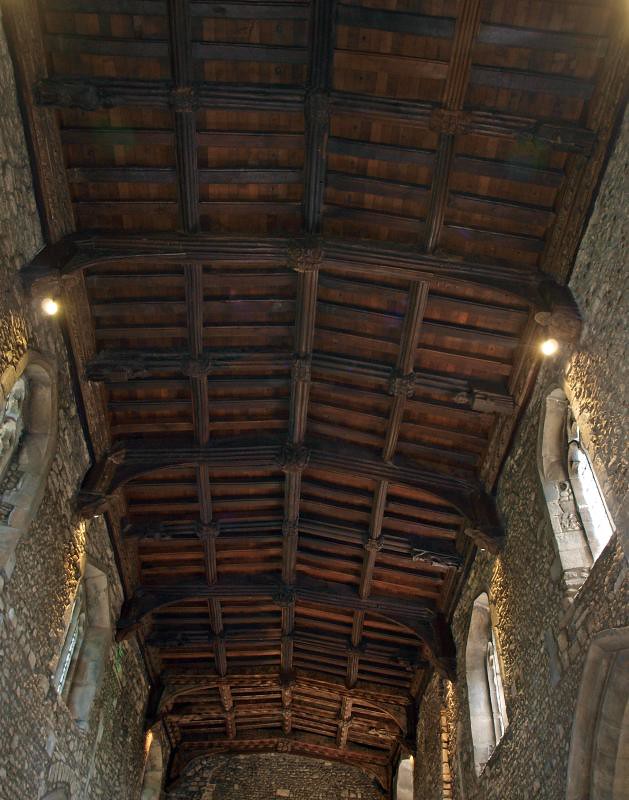I rather wish I'd found Hemingford Grey.
ST MARGARET. Of brown cobbles. W tower with clasping buttresses with chamfers towards the middles of the sides and a recessed spire with two bands and two tiers of lucarnes in alternating directions. Interesting N aisle with windows and doorway of c.1300. All three windows are of two lights and straight-headed, which is remarkable, and the E window is just as remarkable, provided it is not interfered with. The chancel is of yellow brick, probably of c.1800. The interior has arcades of three bays (standard elements) plus a truncated fourth into which the tower now cuts. The E bay represents a former crossing. This is evident from the thicker octagonal piers, the half-arches, i.e. flying buttresses, across the aisles, and the thickening of the upper nave walls. Another disturbance in the clerestory walls is the replacement of two-light by three-light windows. Fine decorated rood-bay of the nave roof. Decorated bosses also in the N aisle roof. The S porch entrance is E.E. Could it belong to the date of the arcades, or must it be earlier? And is it re-set? - STAINED GLASS. In the N aisle E window good C18 heraldic glass. - In a N aisle window glass by Tower, of 1928, incredibly reactionary.- PLATE. Salver on foot of Britannia metal, 1719-20; two Cups and a Flagon, 1795-6; Paten on foot, 1800-1. - MONUMENTS. Joshua Barnes d. 1712. Baldacchino above the inscription; putto-heads and palm-fronds at the bottom. He was Regius Professor of Greek; so the inscription is partly in Greek. - Jacob Maxey d. 1710. Tablet with a little bust on top.
HEMINGFORD ABBOTS. Who can forget its lovely square, the old thatched barns, the white houses, and the green river bank? It was the Hemingford of the abbots of Ramsey as distinguished from the Hemingford which belonged to the Greys. It has spacious meadows by the Ouse, a fine park, two lakes, and a heronry. Some of its cottages were here in Cromwell’s day, and we found here two descendants of Cromwell’s sister Jane, Mrs Ivatt and her daughter. The medieval clerestoried windows of the 13th century church are a joy to see, and its carved and painted roof is a splendid piece of Tudor England, with ten angels holding musical instruments and 12 figures with shields. Some of the small robed figures have long hair and look very quaint. The inscription on one of the tie-beams can still be seen, and it reads: “Pray for Wyllm basele and for hys wyvs.” There is a painting of St Christopher fading on the walls after 500 years. The fine 14th century tower (the base of which juts into the nave) is later than the nave and takes the place of the old central tower. It has a lofty spire seen far off. By the south door are two sundials. A stone coffin has been brought indoors from a field near by; with it was a vase found when the coffin was opened. We noticed a curious thing in the rectors list here, for the first rector gloried in the name of Aristotle.



No comments:
Post a Comment